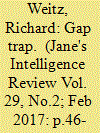| Srl | Item |
| 1 |
ID:
193190


|
|
|
|
|
| Summary/Abstract |
Decentralized court finance and personnel management practices have been criticized for breeding extra-judicial interventions and corruption in China. Determined to advance law-based governance and to constrain recalcitrant local leaders, the Chinese leadership under Xi Jinping in 2014 rolled out reforms to centralize local court finance to the provincial level with the aim to sever local courts from local influence. Despite high expectations, implementation is at best partial. Close to half of all provinces have not accomplished the required changes, and more than half of all court expenditure continues, to date, to remain reliant upon local governments. The direct reason is that provincial governments lack sufficient and sustainable fiscal capacity to finance the operation of local courts without central assistance. Different interests between major stakeholders, namely the courts and the fiscal bureaus, also add to coordination problems and difficulties in reform implementation, in particular the tension between fiscal adequacy pursued by the judiciary and fiscal management efficiency stressed by finance bureaus.
|
|
|
|
|
|
|
|
|
|
|
|
|
|
|
|
| 2 |
ID:
155669


|
|
|
|
|
| Summary/Abstract |
This article argues that manufacturing policies of Chinese local governments have provided an important corrective to some of the weaknesses inherent in the central government's indigenous innovation framework, most importantly its inattention to the importance of advanced manufacturing capabilities for innovation. Based on an original dataset of over one hundred executive interviews conducted with 43 Chinese wind and solar firms, I identify both central government R&D funding and continued local government support for manufacturing as critical factors in enabling innovation among China's renewable energy firms. In particular, this article shows that firms have utilized a combination of both central and local government policies to establish unique engineering capabilities required for innovation in commercialization and scale-up to mass production. The findings suggest that continued local government support for the manufacturing economy has not undermined central government innovation policies, but has (1) broadened the range of resources available to entrepreneurial firms and (2) enabled new options for industrial upgrading that are outside the conceptualization of innovation underlying the central government's indigenous innovation framework.
|
|
|
|
|
|
|
|
|
|
|
|
|
|
|
|
| 3 |
ID:
151779


|
|
|
| 4 |
ID:
108595


|
|
|